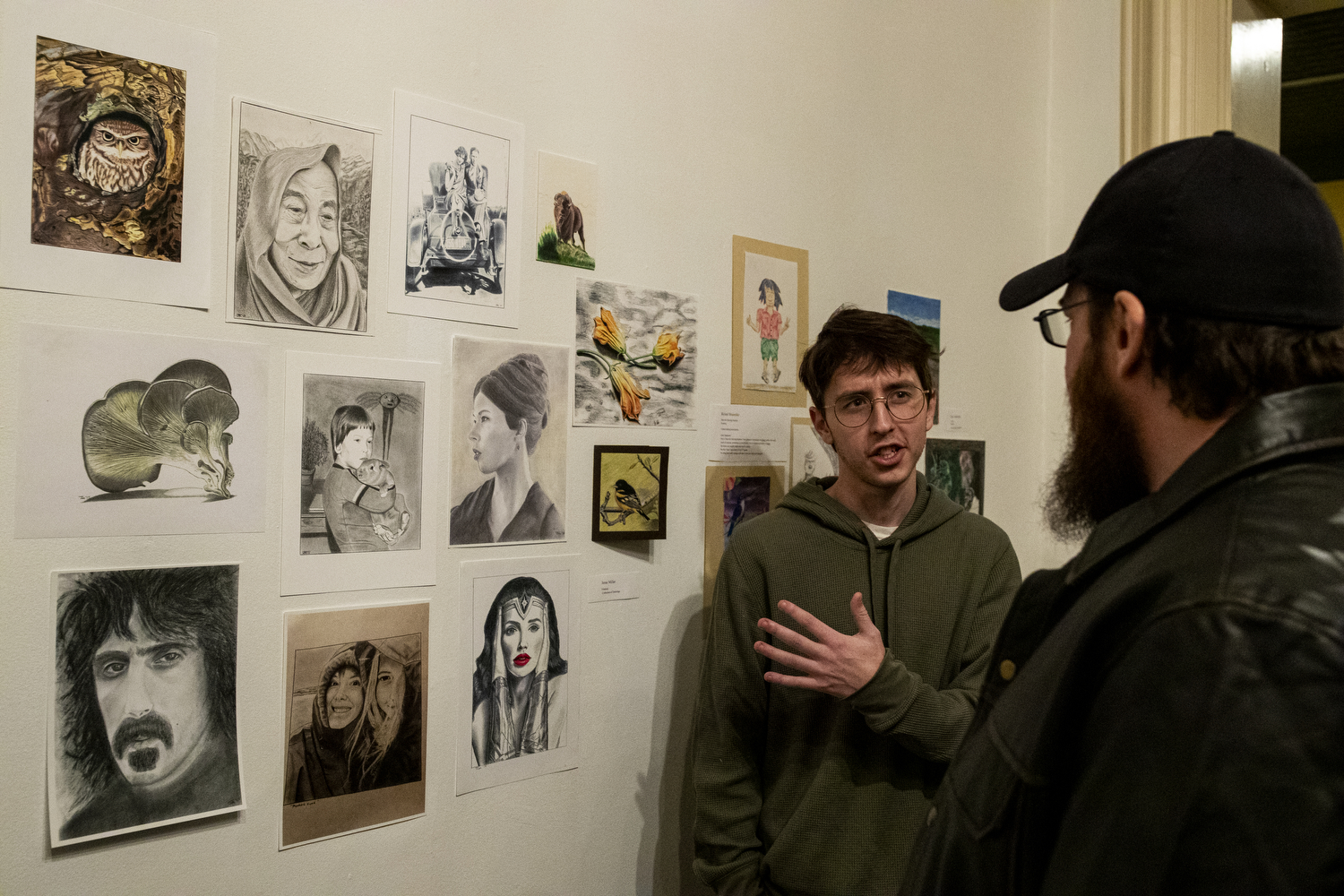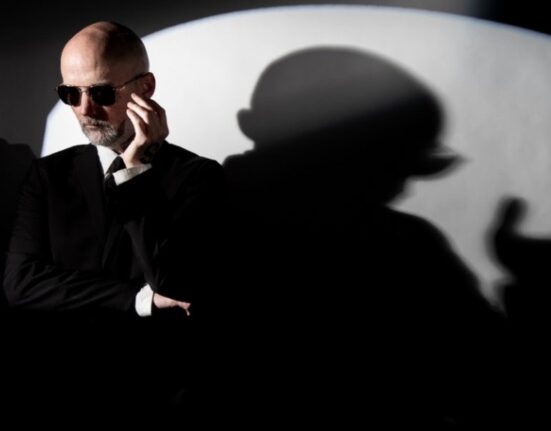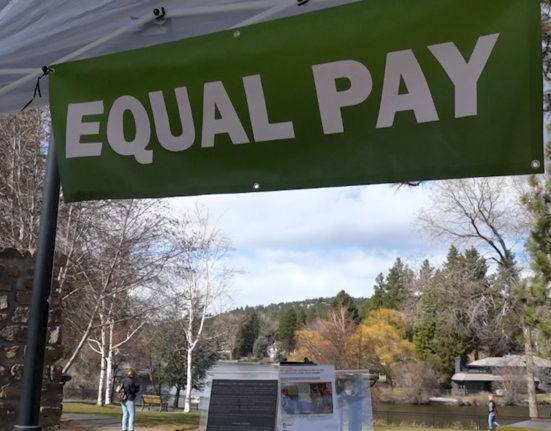The text on the plaque card underneath Chris Martin’s artwork read “Created while incarcerated.”
His pieces, handcrafted using only popsicle sticks, glue, and paint, were inspired by mementos he held close to him as someone born, raised, and incarcerated in Iowa: A large portrait of the late Iowa football coach Hayden Fry and a jewelry box for his mother.
“I’m starting a Caitlin Clark backboard now,” Martin, who was released from prison a few months ago, shared. “I can make it outside [of prison], so it’s going to be a lot nicer now that I’ve got tools and wood.”
Martin joined the many formerly incarcerated artists, poets, and contributors who volunteered to share their work at the packed, Friday night gallery opening of “Art From the Inside Out,” an event hosted by Inside Out Reentry and Public Space One in the lobby of its Close House location.
Though this is the program’s second time hosting the event — last year at the ArtiFactory — Inside Out Reentry Executive Director Michelle Heinz expanded this year’s gallery by recruiting more volunteer artists. Additionally, she asked the artists to share personal statements.
“It’s just so important because we all love art …What better way to lift up people’s voices than by doing it in a way we can all really connect with,” Heinz said. “Yes, of course they were incarcerated, but here they’re a beautiful, resourceful artist.”
Heinz shared that her goal for the gallery was to destigmatize incarceration and engage the public in understanding, and, further, develop empathy for, the situations that may lead to an individual’s incarceration.
Neil Goettsch, a caseworker for Inside Out Reentry, said his experience working with formerly incarcerated individuals has helped him to see creativity in an entirely different context.
“The art I see here shows not only the creativity of the formerly incarcerated but the resilience and ingenuity. A lot of the stuff here is made using materials you wouldn’t normally think of for art,” Goettsch said.
Portrait artist Jesse Miller had a similar outlook. Though he had no prior drawing experience before his incarceration in 2015, he adopted the hobby so he could continue sending birthday presents to his family from behind bars. Through this need, Miller discovered he had a gift of his own.
“They put you in this place where you have all the time in the world, where you have nothing to do except get in trouble if you want to, so [art] was a way for me to keep out of the mix,” Miller said.
After his release in 2021, he took a suggestion from his parole officer to become involved with Inside Out Reentry. Because of this, his skilled portraiture, something initially created for only his and his family’s eyes, was now a collection he witnessed dozens marvel at during the gallery’s opening event.
“It’s such a positive release, being able to take your thoughts and put them on a piece of paper. It’s a very healthy release from being focused on the past,” Miller said. “It’s therapeutic. It kept me from climbing the walls in there.”
When his brother passed away in 2006, Reggie Grandstaff found himself falling down a dark path of drug use and aggression, one that eventually led him to incarceration.
Inspired by the powerful delivery of Maya Angelou’s work and Robert Frost’s rhyme schemes, Grandstaff turned to poetry. His poems, written while in prison, detailed his affection — and longing for — his former wife and three children.
“Sometimes it’s easier to get your thoughts out on paper than it is to speak them,” Grandstaff said. “A lot of my stuff is putting my pain into words. There’s not a bunch of happy poems.”
Each piece displayed in the gallery was created out of an incomprehensible pain, a sentiment the artists shared separately. But instead of feeding into that pain, these formerly incarcerated artists were able to rehabilitate it — to transform it into something beautiful, let alone tangible.
However, the artists shared their pain was also indicative of a larger issue of mass incarceration in the United States.
While Doren Walker was incarcerated in the Iowa Oakdale Federal Correctional Institution, he decided he could leave prison a different man.
Walker turned to art as a hustle, collecting pieces from various inmates while in prison. Upon his release, he intended to sell them for profit.
But when he was eventually released after nearly 23 years in 2016, Walker’s more than 70-piece collection gathered dust in the corner of his bedroom; he developed an emotional connection to his fellow inmates’ — his friends’ — artwork and could not bear the thought of parting with it.
RELATED: Feminist author Roxane Gay joins Emma Goldman fundraising event
“‘How selfish of you to just keep it all to yourself,’” Walker’s partner said after showing her his collection. “And she says, ‘Well what do you think about having an art show? You always said you want to educate the taxpayers.’”
Pete Mendoza, one of Walker’s friends from Oakdale and the artist who makes up the bulk of his collection, recently died following a battle with alcoholism last November.
“We see all these pictures [that read] ‘Break the cycle, break the cycle.’ But how? Incarceration is not the answer for addiction,” Walker said while pointing to one of Mendoza’s pieces: A colorful, elaborate pencil drawing of a phoenix on fire.







